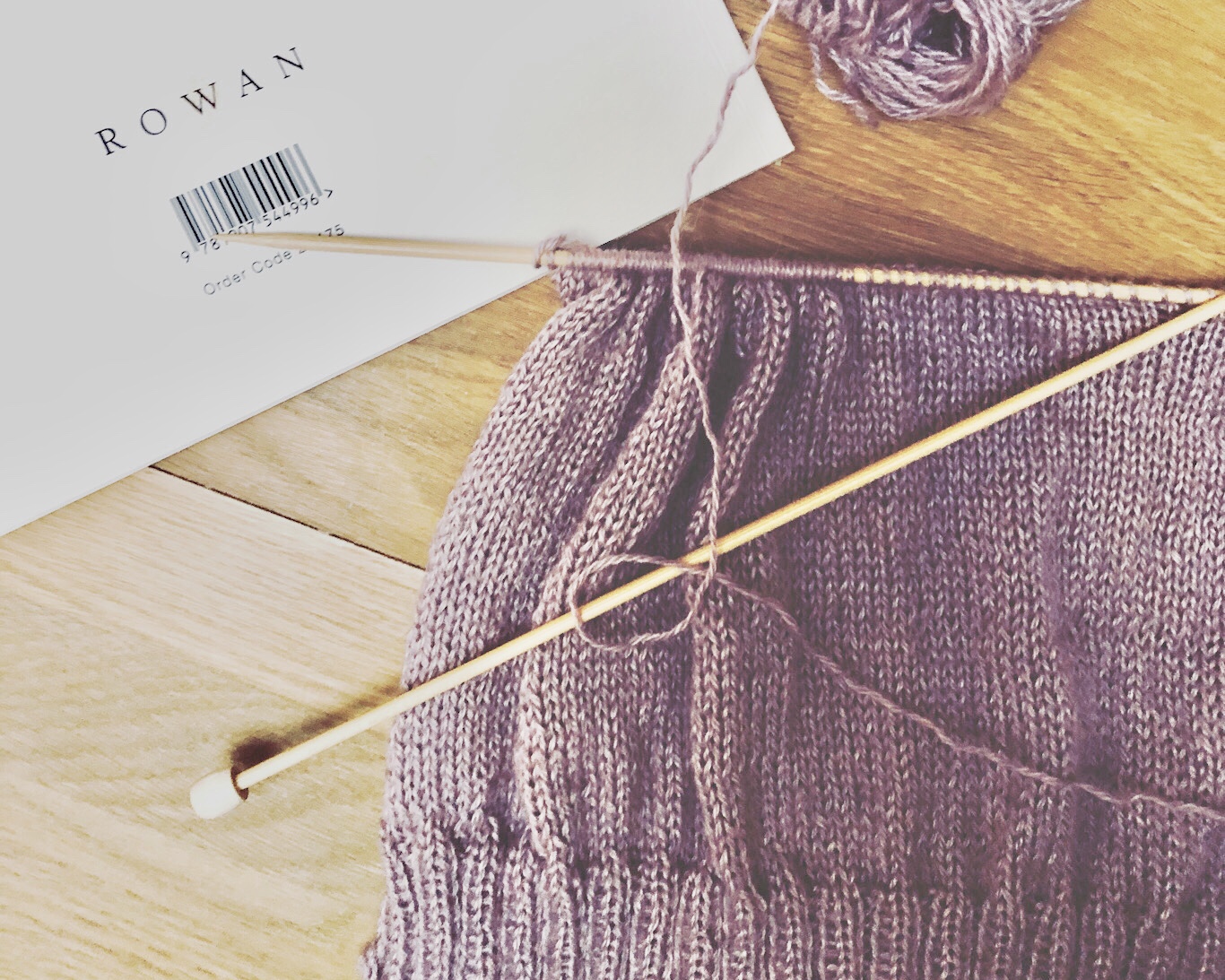I may have mentioned that I started working on a new project, a ROWAN pattern called “Kate”. I started it a few days ago. It’s a very basic sweater. But that’s okay; I like basic.
Ever since I finished the sleeveless purple top, I’ve only worn it once. It’s still chilly around here, so I need something to throw over it that isn’t too bulky and that won’t clash with the rib pattern, so I hope this works. 🤞🏻
I should be making the sweater in green like the photo from the “Rowan Loves.. kidsilk haze & felted tweed” magazine, which has 9 designs by Sarah Hatton. I love emerald green! (Oh well, maybe next time.)

I’m loving the yarn I picked out: Folio by Berroco yarns. I hope it doesn’t behave too differently from the Kidsilk Haze specified in the pattern. Normally, I would have gone with the recommended yarn. I love Rowan yarns. But Berroco had the color I needed, and I didn’t want to wait for an order to be mailed to me. Although, Kidsilk Haze in the Majestic colorway would have probably worked perfectly. (Shoot! I just remembered I need more yarn to actually get two full sleeves, or I might end up with a vest! It’s a holiday today, so I can swing by the yarn store later. I hope they still have some left!)
Yarn substitutions always make me a little nervous and honestly most of the time I see a pattern I like, I want it to look just like the one in the picture. I am the same way with recipes. (A little crazy, I know!) So, when I realized I was going to have to use something different than Kidsilk Haze, I got a little worried and figured I’d better do some research to hopefully get it right. There’s nothing worse than putting in all those hours of knitting and end up with catastrophic results. (Trust me, it’s happened to me before.)
So here’s a simplified list of what I’ve learned:
1. Look for a yarn with similar fiber content. This is super important!
2. Read your yarn labels. Look them up online if you have to. Most yarn companies list all the details of their yarns on their websites. You’ll want to see if the gauge matches. In my case, I had the following:
–Kidsilk Haze: 70% mohair, 30% silk (most decadent!) 😍
Knitting gauge: 18-25 sts, 23-34 rows to 4″/10cm.
–Folio: 65% superfine alpaca, 35% rayon. Knitting gauge: 22 sts, 32 rows to 4″/10cm.
3. Look at weight and yardage per skein. This is what I learned! You’ll sometimes be happily surprised to find out you may need to spend a little less money to make the same project using a different yarn.
KidSilk Haze: yarn ball weight, 25 g.; yardage (meterage), 210 m.
Folio: yarn ball weight, 50 g.; yardage (meterage), 200 m.
Conclusion: Close enough in gauge, cousins in content, twice as much weight but almost exact meterage per ball with Folio. Let’s test this out!
4. Swatch, swatch, swatch. I’m a firm believer in the importance of this step. Everyone knits a little differently. Some of us are tight knitters, some knit more loosely. This is important also when you choose which size to knit.
5. If you are not completely sure the yarn you pick for substituting the one called for in your pattern will be a perfect match, don’t buy it all at once. Buy only enough for some testing. Then, if you love it, buy all you need plus one extra ball « just in case. » You may never use it, but it stinks when you’ve been working on a project for months, only to realize you are short on yarn to finish it. And good luck trying to get an exact match for your color then!
Tip: the yarnsub.com website is awesome when you have no clue of where to start when trying to substitute yarn. I visit it often!
So far, after knitting about 7 inches for the back I decided to start over. I don’t know why this yarn inspired me to try to knit more loosely. I think it was because it’s kind of fluffy. It’s a very light yarn. But I should have known better! My tension was all over the place and in the areas it was ultra-loose it looked like I had holes in the work. Ugh! I couldn’t stand it. So I started over and it’s a little better. This yarn requires very steady stitches and it’s less forgiving than Kidhaze, which has a fuzzy finish that hides uneven tension a bit better. Definitely something to consider if this is one of your first projects!



